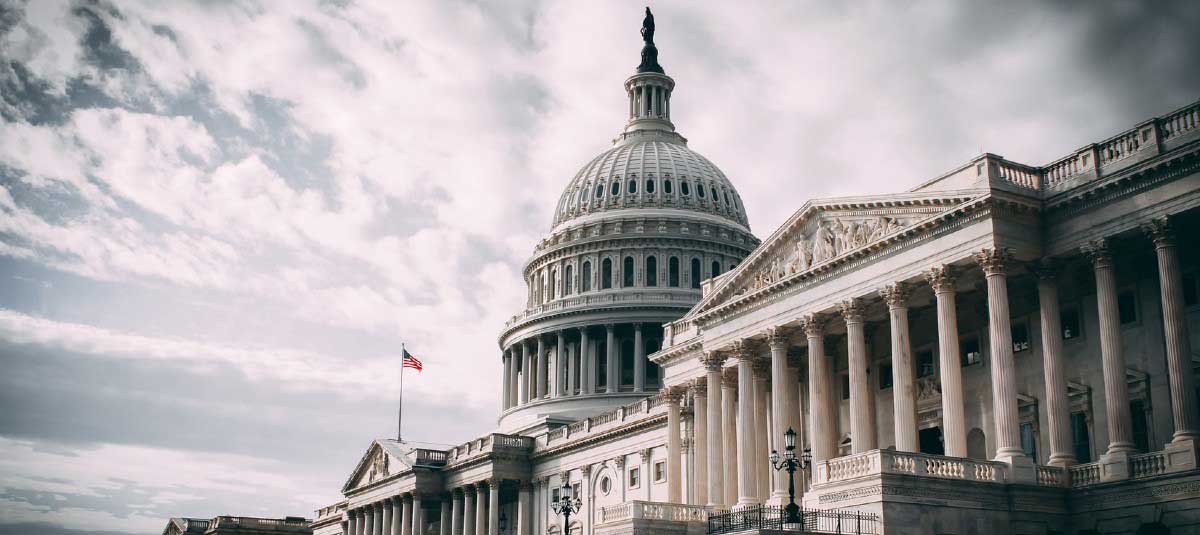Coronavirus Relief: Everything Your Nonprofit Needs to Know About the Stimulus Package

This post is written by Jordan Keller of Dark Horse CPAs. Jordan has broad experience providing comprehensive tax and accounting services across many industries and specializes in serving nonprofit organizations.
If your head is spinning with all of the legislation that has been passed during the last few weeks, you’re not alone. This is our guide to help make sense of the stimulus package for nonprofits.
There were three phases of relief legislation put into place in March 2020: the Coronavirus Preparedness and Response Supplemental Appropriations Act, the Families First Coronavirus Response Act (FFCRA), and the Coronavirus Aid, Relief, and Economic Security (CARES) Act, in that order. This guide will focus on the latter two as these are the Acts that most impact nonprofits.
On March 18, 2020, the Families First Coronavirus Response Act was signed into law and takes effect on April 2, 2020. This Act introduced an expanded Economic Injury Disaster Loan program to include relief for coronavirus-related business disruption. Additionally, it put into law the Emergency Paid Sick Leave Act and the Emergency Family and Medical Leave Expansion Act.
Economic Injury Disaster Loan (EIDL)
This loan program generates loans directly from the Small Business Administration (SBA) for businesses and nonprofits that have been negatively impacted by coronavirus. Unlike SBA loans of the past, these loans come directly from the SBA as opposed to a private bank. The loans are designed to help cash-strapped organizations continue to pay monthly bills, and organizations can apply for them until December 31, 2020.
- Loans up to $2 million
- Interest rate for nonprofits is 2.75% (3.75% for businesses)
- 30-year term
- No fees, closing costs, or prepayment penalties
- Must be personally guaranteed by those with greater than 20% ownership
- No collateral required for loans less than $25,000
- For loans above $25,000, insufficient collateral will not prevent loan approval
- Processing time: 4 to 7 weeks after approval (estimates vary, but loan application volume is high and SBA resources are strained)
Emergency Paid Sick Leave Act
This Act provides paid sick leave for all employees in addition to your organization’s employee benefit program.
- Provides a credit to be used to offset employee and employer tax withholdings to the extent of paid sick leave paid (health issue of employee), not to exceed $511 per day per employee, up to 10 days per employee (thus, max credit of $5,110 per employee)
OR
- Provides a credit to be used to offset EE and ER tax withholdings to the extent of paid sick leave paid (health issue of employee’s family member), not to exceed $200 per day per employee, up to 10 days per employee (thus, maximum credit of $2,000 per employee)
To illustrate how this works, let’s say you pay an employee $4,000 in sick leave and run your payroll with this sick leave in it. This will give you a $4,000 credit. Also, let’s assume that the tax withholdings on this payroll that would be sent to the IRS would have normally been $5,000.
What you can now do is take the $4,000 credit against that $5,000 and only must pay out of pocket $1,000. If you fail to do this, or if the credit exceeds the tax withholdings on a given payroll, you will be able to apply for an expedited request on the credit not used. Otherwise, you’d claim the credit when filing your Q2 payroll tax returns in July.
The Emergency Family and Medical Leave Expansion Act
This Act provides eligible employees with paid leave if their child’s school has closed in response to the COVID-19 pandemic.
- Employers could pay up to $200/day and $10,000 in aggregate for each employee to care for a child whose school/day care is closed. A 100% tax credit on these wages paid can offset tax withholdings in the same manner described above.
- This credit can be used in addition to the Sick Leave credit described above. Thus, one employee could generate a $15,110 credit for the employer for wages paid under both Acts.
The mechanics of how exactly these credits are going to be utilized remains unknown as payroll companies are scrambling to update their systems to accommodate the new law, and as we await the filing instructions for expedited refunds that weren’t claimed on a given payroll.
It’s also important to note that this will not go into effect until April 2, 2020. It will therefore only count for wages paid for days on or after that date. As such, it’s crucial that you talk with your payroll administrators now, whether they’re in-house or out-of-house, to inquire as to how they will handle the credit reductions of tax withholdings, lest you lose your money until you’re able to reclaim it from the IRS.
On March 27, 2020, the Coronavirus Aid, Relief, and Economic Security (CARES) Act was signed into law. Totaling $2.2 trillion dollars, this bill was written to deliver much-needed relief for American families, workers, businesses, and nonprofits. The CARES Act is the third piece of support and stimulus placed in service to stave off the economic effects of the COVID-19 pandemic in the United States.
Paycheck Protection Program
This program provides a loan for 2.5x average monthly payroll costs for the 12-month period preceding your loan origination date.
- Loan can be used on payroll (including independent contractors), group health benefits, interest on mortgage payments, and other debts, rent, and utilities
- The loan will be forgiven (and non-taxable) to the extent of the costs incurred in these categories during the eight-week period after loan origination
The Paycheck Protection Program is designed to help cover payroll costs over an eight-week period. To determine how much you’re eligible to receive, take your payroll costs from the last 12 months, divide by 12, and then multiply by 2.5.
Let’s say your payroll costs were $120,000, or $10,000 per month. Multiply that $10,000 by 2.5 (the number of months this loan will cover) and you end up with a loan of $25,000 from this program. Note that this plan excludes compensation above $100,000.
What’s most appealing about the Paycheck Protection Program is that the loan will be forgiven to the extent that you spend the proceeds on:
- Payroll
- Group health benefits
- Retirement benefits
- Payroll taxes
- Payments to independent contractors
So, let’s say the origination date of your loan—the date that it becomes funded—is April 1. What they’re looking to see is how much you paid into these five categories for the eight weeks starting April 1. The total amount paid will be forgiven. The debt forgiveness is non-taxable.
If you don’t use the full loan during this time period, it just becomes a normal loan with a repayment term up to 10 years and an interest rate not to exceed 4%, and with no personal guarantee or collateral required on it. That’s still a great deal.
Another differentiating factor with the Paycheck Protection Program is that it’s funded by private banks. That means you should be able to receive the money faster than with the Economic Injury Disaster Loan (EIDL), which is funded by the Small Business Administration (SBA).
Emergency EIDL Grants
This provides organizations with an expedited grant while waiting for your EIDL to fund.
- Loans for up to $10,000 that can be funded as soon as three days after approval
- Can be used to pay sick leave, maintain payroll costs, pay rent and/or mortgage payments or repayment of debts that can’t be met due to revenue losses
- Does not need to be repaid even if your EIDL application is denied
This grant is predicated on you already having a pending EIDL application. It can provide up to $10,000 for emergency costs like paid sick leave, payroll, rent, mortgage payments, and supply chain costs.
These grants aren’t repayable, even if you get approved for an EIDL loan as well. However, if you take advantage of the grant, it will reduce what they forgive on your loan from the Paycheck Protection Program.
There’s a lot of interplay between the EIDL and Paycheck Protection Program, so you have to be careful that you don’t apply for duplicative funds. For example, if you get funds under the EIDL for payroll, you can’t receive funds for the same purpose under the Paycheck Protection Program. If you have received EIDL funding, don’t disqualify yourself; you can refinance the entire EIDL into the Paycheck Protection Program.
For the entire year of 2020, the limitation on how much of your charitable donations you can deduct against your income, no matter who you are or how much you give, has been lifted. Previously, it was a maximum of 60% for cash donations and 50% for non-cash contributions.
Under the CARES Act, these limitations have been removed for Federal income tax purposes. Additionally, anyone who donates up to $300, whether they itemize or not, can deduct that against other income for donations in 2020 (considered an “Above the Line” deduction).
Make sure you’re getting out there and communicating this to your donors as soon as possible. Not only is this relevant to major donors, it’s also important for small donations, donations made to peer-to-peer fundraising campaigns, and recurring donations.
Free Download: 9 Email Templates to Engage Donors Year-Round
Advice for Securing Your Loan
First and foremost, get help from someone like Dark Horse CPAs. Just because this is a law now doesn’t mean it’s fully fleshed out; there’s still so much that needs to be clarified. Make sure you’re connected to a source of information that can help you through the process as it continues to evolve.
Second, have all your finances at the ready. You’ll need at least two prior years of financial statements, your year-to-date financial statements, and tax returns (payroll and income tax) from the previous two years. A best practice would be to have your year-to-date Profit & Loss ready to go as well, as this will help you project your losses and corresponding loan request amount.
If you need help or have other questions, reach out to Jordan Keller at Dark Horse CPAs. Classy will also be hosting a Twitter Q&A with Dark Horse CPAs about this stimulus package on Wednesday, April 1.
Jordan Keller has broad experience across many industries in both accounting and tax and has deep knowledge of the following industries: real estate health care, nonprofit, retail and eCommerce, construction, and manufacturing. Learn more about Dark Horse CPAs.
The views expressed are not intended to be legal or accounting advice and are not endorsed by Classy, Inc. (“Classy”). Further, the content is not the advice of Classy nor any of its personnel, and neither Classy nor the author bears any responsibility for the content of this post. The information included in this post has not been verified by Classy for accuracy.

9 Email Templates for Nonprofit Annual Communication Plan



